Causes of Ganges River Pollution: A Case Study
Since the beginning of our blog, we have covered topics that are related to the History and Geography of India. In our articles, we have covered Mountains in India as well as Rivers in India. We specially covered the Ganges River in a separate article and now we would focus on Pollution in Ganges River in this article. This article came to my mind after watching a lot of documentaries that were related to Rivers of not only India but across the globe. The pollution in the Ganges river is one of the most debated topics worldwide. Although the Ganges River has self-healing power and the successive Indian government has spent a billion dollars to purify it but the situation has only worsened. It is considered a goddess in India, therefore, Indians think that the Ganges river cannot die and therefore they dump millions of wastes every day without thinking about the consequences. In this article, we would be covering Pollution in Ganges River (in different states) and the reason for Ganges River Pollution. We encourage all our readers to provide their input and observations related to this article so that we can spread awareness as much as we can.
Ganges River is the longest river in India and it provides water to about 40% of India’s population. The Gangetic Plains formed by Ganges River is one of the most fertile lands on the earth and almost 10% of the world population lives here and earns their livelihood and generates nearly 40% of the GDP of India. From source to mouth the total length of Ganges River is 2600km and the Ganges basin covers almost quarter area of the Indian mainland. In the year 2016, I traveled to Badrinath Temple, did rafting at Rishikesh and visited the Ghats of Varanasi. All three places have one thing in common i.e. these sites are located either on the banks of Ganges River or any of its tributary. Another thing I noticed was that the water was clean at Badrinath Temple while it was severely polluted at Varanasi. Throughout its length, the river flows through some of the biggest cities of India and these cities contribute heavily to the pollution of the Ganges River. As per the World Bank Sponsored Study (State of Environment Report), the high pollution level in Ganges Water contributes 9-12% of total disease in Uttar Pradesh (U.P.). Also, the Ganges River was ranked among the five most polluted rivers of the world in the year 2007.
Qucik Navigate:
Terminologies To Understand Water Pollution
Before jumping to our article it is necessary for us to understand what different parameters are used to test the quality of water in a river or stream. The four important parameters are:
Dissolved Oxygen (DO)
The dissolved oxygen (measured in mg/L) is the most important characteristic that determines the quality of water a river or stream has. A water body can be considered as healthy as long as its dissolved oxygen DO exceeds 5 mg/L. Below this most fishes do not survive and they need a minimum of 8 mg/L D.O during their embryonic and larval stages.
Biochemical Oxygen Demand (BOD)
Except for bacteria, organic matter in water is generally not harmful but causes oxygen depletion in the water. The bacteria present in the water feed on this organic matter thereby depleting oxygen and generating CO2. Therefore, the more organic matter is present, the more bacteria feed on it, and the greater the oxygen depletion is. So the amount of organic matter is directly related to oxygen depletion.
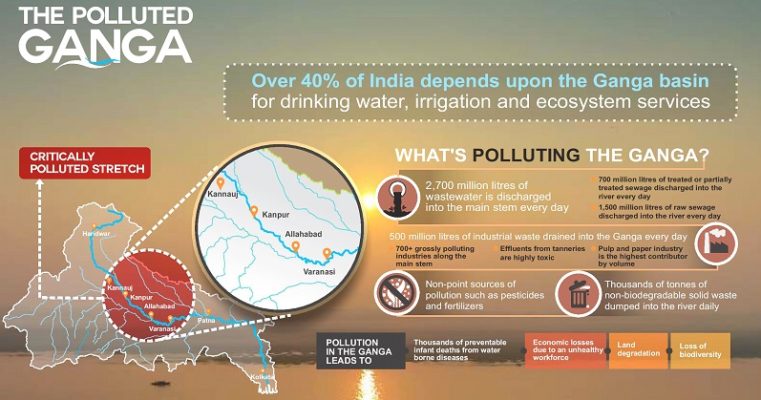
Fecal Coliform (FC)
Fecal coliforms are the group Coliform bacteria that generally originate in the intestines of warm-blooded animals and are considered to be present specifically in the gut and feces of warm-blooded animals. Fecal coliforms are considered an accurate indicator of animal or human waste in the water.
Total Coliforms
Total Coliforms include bacteria that are found in the soil, in water and inhuman or animal waste. The total coliform is relatively easy to measure in the lab and therefore has been selected as the primary indicator for the presence of disease-causing organisms in the water.
Now let’s take a look at some of the important factors that causing Ganges River Pollution.
Ganges River Pollution Caused by Cities Located on the Banks
As mentioned earlier the Ganges River flows through some of the biggest and densely populated cities of India. These cities include Kanpur, Varanasi, Allahabad, Patna, Rishikesh, Haridwar, Farrukhabad, Kannauj and Kolkata. All these cities are directly or indirectly dependent on the river for their daily needs and in return, they dump their everyday waste into the Ganges River without any treatment. A large proportion of solid and liquid wastes like domestic usage (bathing, laundry, and public defecation), Sewage wastes, unburnt dead bodies are dumped into the Ganges River. Another important thing to note here is that 80% of pollution to the Ganges River is caused by sewage. Let’s look at some of the figures
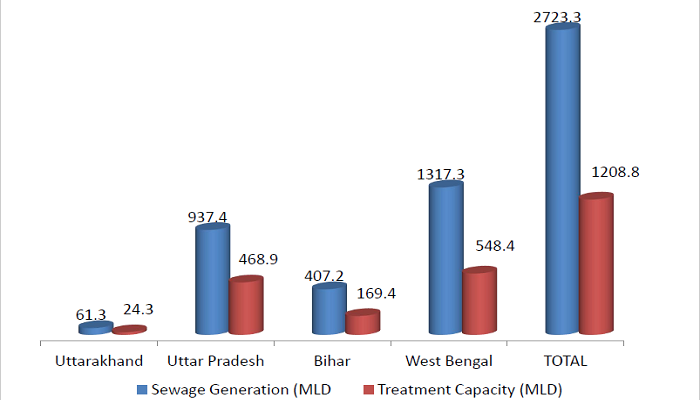
- According to official records, there are nearly 36 Class I cities (population more than 1 Lakh) and 14 class II cities on the banks of River Ganges. They generate 2800 MLD of wastewater and have treating capacity of only 1208 MLD. (It is to be noted that the treated water is still polluted and not up to the standards).
- Ganges River is polluted by Faecal Coliforms bacteria in its entire length whereas the level of BOD exceeds the criteria in the stretch that spans from Kannauj to Tarighat in Uttar Pradesh. Narora to Allahabad segment of River Ganges is the most polluted stretch, Kanpur is the nerve center.
- At several places (especially in Uttar Pradesh) water is pumped out from the river for irrigation. In addition to this degradation of the river is visible due to the encroachment of river bed, sand mining, active netting of fish and open defecation.
- 6 million tons of fertilizers and 9,000 tonnes of pesticides are used in agriculture within the basin. Thousands of animal carcasses and human corpses are being released into the river every day. In many places, solid waste is dumped which includes flowers and materials used for religious purposes.
- The value of DO and BOD meets the standard criteria only when the river is in its origin phase. As soon as Ganges enters the plains the value of DO decreases and BOD increases.
- The Value of TC and FC is very high throughout the stretch of the river (even at Rudraprayag). At most of the stretches of the Ganges River, its water is not even suitable for bathing.
- Water quality of the river increases as it enters Bihar (Ghaghara, Gandaki, and Sone river join the Ganges) but it again starts degrading once it enters the city of Patna. Fecal contamination is very high and way beyond the standard criteria.
- Also, as per the record of CPCB (Central Pollution Control Board), the state of Uttar Pradesh is responsible for nearly 76% of pollution in the Ganges River. At Varanasi 30 polluted drains flows directly into Ganges River without any treatment of water.

- Indian Institute of Toxicological Research (IITR) analyzed water samples from selected sites in Unnao. Twenty four samples (18 from drinking water sources and 6 from effluents) were collected and out of 18 drinking water samples, 13 samples were found to exceed the recommended TDS limit, 12 samples were found to exceed the limits in terms of total hardness, 13 samples were found to exceed the limit for fluoride, 6 samples were found to exceed the limit for sulphate, 4 samples were found to exceed the limit for chloride, 5 samples were found to exceed the limit for alkalinity, 2 samples were found to exceed the limit for manganese, 9 samples were found to exceed the limit for iron and 1 sample was found to exceed the limit for mercury.
Ganges River Pollution Caused by Industrial Waste Dumped into Ganges River
Many industrial cities are located on the banks of Ganges River like Kanpur, Allahabad, Varanasi and Patna and they dump toxic chemical waste into the river. Major industries include Distillery, Pulp, and Paper, Tannery, Sugar, fertilizer plant, and slaughterhouses. The chemicals dumped into the river include Arsenic, sulphur, mercury. These industries are nearly 20 % responsible for water pollution in the river but they pose hazardous effects to water quality, its chemical property, and riverine life. The blood and other waste from slaughterhouses are also dumped directly into the river.
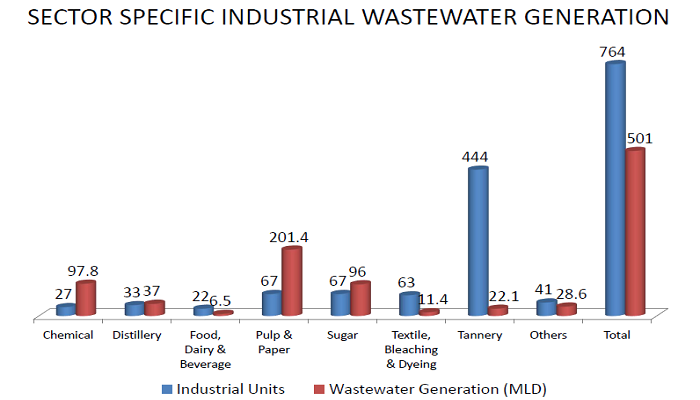
- In terms of industries polluting the Ganges, the tannery sector is the main culprit whereas other dominating sectors include Pulp & paper sectors, Chemical, and sugar sector.
- According to documents submitted to the court by the Centre, the number of grossly polluting industries (GPIs) affecting the Ganga was 764 in 1985. In 2017, government officials were still listing the number of GPIs as 764.
- Out of these 764 industries, 687 are in Uttar Pradesh. Another important thing to note is, the water consumed by these polluting industries is 1123 MLD whereas total wastewater generated was 501 MLD i.e. 45% of total water consumed.
- Most of the Tannery and Slaughterhouse operating in Uttar Pradesh lack basic water treatment capability and in absence of that the wastewater is directly dumped into the Ganges.
- Many industries operating in the Ganges belt (especially slaughterhouse & Tanneries) do not have a valid permit to operate. According to the CPCB report submitted to NGT (National Green tribunal), only 1 Slaughterhouse has a valid permit to operate in Uttar Pradesh (out of 126 although the number can be more).
- Central Ground Water Board carried out a test on Ground Water Contamination in the Industrial zone around the Ganges River in 2010. Samples were collected from different sites and it was found that these samples exceed the limit for fluoride and chromium. Also, High values of arsenic in groundwater have been recorded.
Ganges River Pollution Caused by Polluted Tributaries Joining Ganges River
Not only the Ganges River is polluted but the rivers joining Ganges River during its course are also heavily polluted. These rivers further increase the level of pollution in the Ganges River. These Rivers include Yamuna, Gomti, Ramganga, and Kali. Out of all the tributaries joining River Ganges Ramganga and Kali river are the most polluted. Important things to note here are:
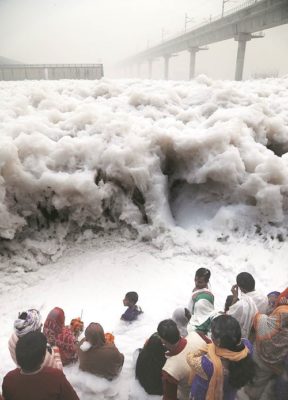
- Of all the river systems joining Ganges River, Ramganga River carries maximum industrial wastewater followed by the mainstream of Ganges River and then Kali River. Water Quality of Ramganga affects the water quality of the Ganges River at Kannauj.
- The cluster of polluting industries in Kashipur and Moradabad discharge their effluent in river Ramganga and that of Meerut and Modinagar in river Kali. Both these tributaries contribute to pollution in river Ganga in the vicinity of Kannauj.
- The flow of river Kali at Khatauli town was zero which shows that the natural source of river Kali was abolished and flow was only observed during monsoon. Moradabad and Rampur drain are two major drains discharging industrial/domestic wastewater in river Ramganga.
- The level of Dissolved Oxygen in River Yamuna is zero at Agra. The river is officially dead in Agra. Later on, the same Yamuna River joins the Ganges River in Allahabad. It does not dilute the concentration of effluents rather increases it.
- Gomti River passes through Lucknow, the capital city of Uttar Pradesh and millions of gallons of sewage are added into the river. Gomti River later joins the Ganges in Varanasi and contributes further to its pollution.
Ganges River Pollution Caused by Travelling Boom in India
In the last decade, there has been a boom in traveling in India. There has been a sharp increase in solo traveling as well as in group traveling and it is another important factor causing Ganges River Pollution. Rishikesh is the biggest center of water-rafting in India and thousands of tourists come here for rafting. The city has hundreds of hotels but hardly a few have proper sewage disposal systems in place. Many Hindu pilgrimage sites are located on the banks of Ganges River which draw a large number of tourists and pilgrims. Even at Badrinath Temple, I saw the wastewater being directly dumped into the Alaknanda River. Earlier pollution in the Ganges used to start once the river enters plains but now the river comes polluted from Devprayag (Origin of Ganges or even before Devprayag). According to one of the local living at Gangotri temple “In 1977, when I used to go for mountaineering training, hardly two or three cars could be spotted in Gangotri. But now there are hundreds and thousands of cars and buses plying pilgrims and tourists to these places during the summer months,”. Few points related to this are:
- The higher value of coliform bacteria and organic pollution is observed in Upper Ganga due to open defecation and discharge of wastewater directly through small drains into the river. The value of TC and FC was very high indicating sewage is directly dumped into the river.
- With respect to cities contributing pollution in Uttrakhand, Haridwar and Rishikesh play a major role. In Uttrakhand 14 drains discharge 440 MLD of industrial and domestic wastewater. Rishikesh region contributes 184 MLD of wastewater from 08 drains with a BOD load of 1265 kg/day alone. In the Haridwar region, total wastewater flow is 60 MLD whereas 48.6 MLD of wastewater flows directly to river Ganges and remaining drains discharge to Upper Ganga Canal.
- The criteria for dissolved oxygen (DO) are not met at Haridwar whereas Rishikesh fails to meet the criteria of BOD.
- Fecal Coliform value is very high and does not meet the water quality criteria for bathing in river Alaknanda at Rudraprayag and at Devraprayag. A higher value of coliform bacteria and organic pollution is observed in Upper Ganga due to open defecation and discharge of wastewater directly through small drains into the river.
- Almost all the lodges, hotels and residential buildings divert their wastewater into the Ganges in Rishikesh, Haridwar and other cities situated upstream of Ganges River.
Ganges River Pollution Caused by Dams and Canals on Ganges River
This reason may sound strange but Dams and cannel too cause Ganges River Pollution. Tehri Dam in Uttrakhand on Bhagirathi River holds the flow of Ganges River so does many more hydroelectric projects constructed throughout its course. Also, as soon as the river enters into plains large amount of water is extracted from it for various industrial purposes and only polluted drains join the river. The main problem with Dams is that they hold the flow of River due to which all the sediments settle on the river bed. It also reduces the water temperature as stagnated water loses heat very easily. This temperature change causes a huge impact on the breeding capability of marine animals (you all can read the case study of Humpback chub found in Colorado River and the effect of temperature on their breeding cycle). Dams also restrict the flow of sediments which greatly reduces the fertility of the soil. Few important points to note here are:
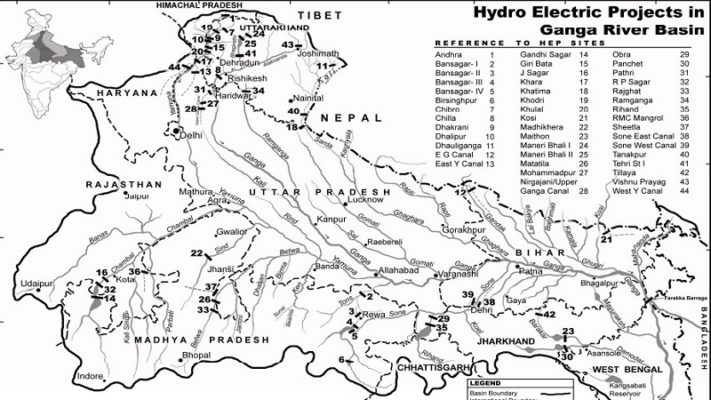
- There are two types of projects on river Ganga 1: The Hydropower projects in the upper reaches and 2: Irrigation (canal system) projects in the downstream.
- Before reaching Haridwar, there are seven operational Hydroelectric projects on River Ganges in Uttrakhand. Another seven hydroelectric projects are under construction and a proposal for 22 more projects is submitted. In a nutshell these all projects are playing with the natural flow of the river in upstream leaving no water downstream.
- Once the river enters plains, the diversion of water of River Ganga takes place through various canals. The Upper, Middle, Eastern and Lower Ganges Canals extracts a sustainable amount of water from the river (10,500+ 10,260+ 9000 + 5800 cusecs) and leaves virtually little or no flow in the main river.
- The Parallel Ganga Canal extracts further 4600 cusecs of water for Narora Atomic Power Plant. In the absence of adequate flow, even with 100% treatment cannot bring the river water quality to the bathing level.
- While rafting at Rishikesh, our guide told us that two weeks ago, the water level in River Ganges at Shivpuri was so low that they could cross the river by walking.
- A large amount of water is pumped out via Upper, Middle, Eastern and Lower Ganga Canal leaving the river almost dry in the summer season. During this time, the flow of rivers comprises wastewater generated from drains and sewers.
Ganges River Pollution Caused by Festivals and Religious Processions
Ganges River is considered as Goddess in India. People in India believe that the river has some magical power and if you bathe in river water on some auspicious day all of your sins would be washed away. A study conducted during Kumbh Mela of 2013 suggests that spiritual dip in holy Ganga at Kumbh is not clean. The level of the BOD increased drastically during the Kumbh Mela. Apart from Kumbh Mela, there are many auspicious days in Hindu Calendar and people from all over India bathe in the river on those days. Idols of God and Goddess are immersed in the Ganges River once the festival is over. The Ghats of Varanasi is famous as Hindu Cremation sites and on an average thousand of dead bodies are burned here every day. Once the cremation ceremony is overall the ashes are immersed in the river. Few points to note regarding this are:
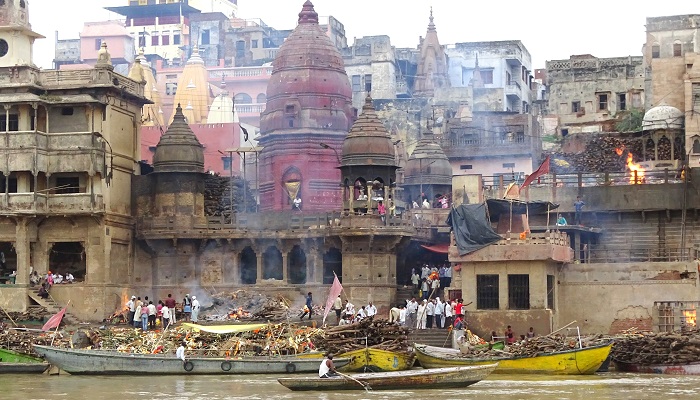
- During 2013 Kumbh Mela, nearly 100 million people bathed in the Ganges River in Allahabad. Not only this the river hosts 2 out of 4 major Kumbh Mela in India.
- The Kumbh Mela is one of the biggest reasons for the pollution of the Ganges River in India. At Sangam, Allahabad, the Biochemical Oxygen Demand (BOD) of Yamuna and Ganga is less than 6 mg/ltr.
- The reason for the sudden rise of contaminants in the river was a sudden increase in the flow of human waste because of increased bathing during Kumbh. UP government employed around 10,000 sweepers to keep the city clean but off the record officials admitted that their drive to check sewage in the Ganges has not worked as dirty sewage was still flowing into the river.
- 10 drains were identified in Allahabad discharging 293 MLD of wastewater. Varanasi through seven drains discharges 558 MLD of wastewater.
- Nearly 4000 dead bodies are cremated at Ghats of Varanasi every day and later ash is immersed in River. The ash from cremation is immersed into River Ganges in all those cities from where the Ganges River passes.
- The water quality at Allahabad and Varanasi is not suitable for bathing, water is dark grey in color and regains muddy color only in monsoons.
Ganges River Pollution Caused by Global Warming
Although Global Warming is a problem with which the whole world is fighting it has impacted the Ganges River a lot. The Gangotri glacier which is the source of Ganges River and one of the largest glaciers in Himalayan Range is retreating at a very high speed. In the last 2 centuries, the Glacier has reduced by 3 kilometers. In the last 60 years, the recession was more than one kilometer at a rate of 19 meters per year. In the last two decades, the rate of the recession was recorded as 34 meters per years and going by this speed the glacier will be nowhere by 2034. The decrease in the size is a direct indication that lesser water will be added into Ganges Rivers when the ice melts. Since the river would not have enough water in upstream, the downstream flow would nearly be comprised of sewage water and industrial waste. A sufficient quantity of water is always required for maintaining the normal flow of the river as well as for diluting the pollutants. A lot of tourist activity around the Gangotri Glacier is also a reason for its faster melting. Greater movement of Humans has caused an ecological disturbance in the region and do the Uttrakhand Government placed a restriction on a number of people trekking to Gangotri Glacier. Now only 150 people are allowed every month to trek to the glacier which is a welcome move.
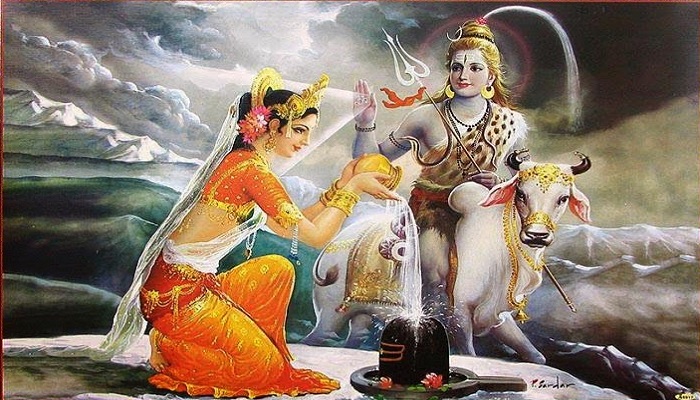
We have nearly completed all the important factors that contribute to the pollution of the Ganges River. Indian Government had launched Ganga Action Plan I (1986) with the motive of cleaning the river and it turned out to be a failure. The second phase of the Ganga Action Plan was started in the year 1993 and in spite of spending millions of rupees the situation of pollution In the Ganges River has worsened. In 2014, after assuming the office of Prime Minister of India, Narendra Modi initiated the ambitious plan of “Namami Ganges” and more than 3000 crores was allocated for this project. According to RTI in the year 2016, more than 2000 crore rupees have been already spent but the condition of the river hasn’t improved till now. These statistics give us an idea that like GAP I and GAP II, the Namami Ganga Programme is also going to be a failure. There is common saying “If the Ganges thrives, India thrives & if the Ganges dies, India dies” and after knowing the importance of Ganges River the above phrase seems logical. We, the people of India know the importance of Ganges River and we all are aware of the critical level of pollution in the river, still, we all fail to come up with any permanent solution. I can give a few more examples that will further prove how critical the condition of the Ganges River in India is but it will only lengthen the article. I would urge all my readers to watch the two documentaries 1. Chasing Rivers, Part 2: The Ganges (By National Geographic) and 2. Our World -Killing the Ganges (By BBC). I would thank all my readers for reading such a long article (nearly 4000 words) and would urge all of you to provide your feedback and suggestions to tackle the pollution in the Ganges River.

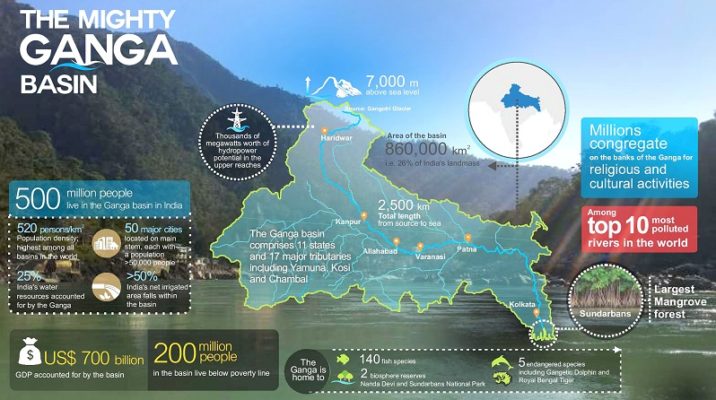
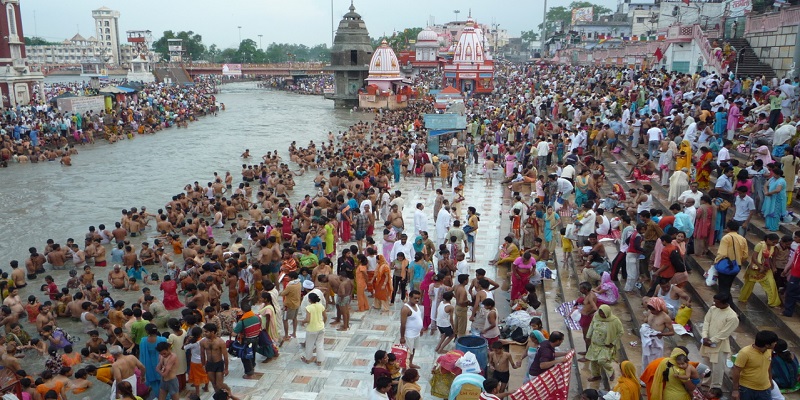
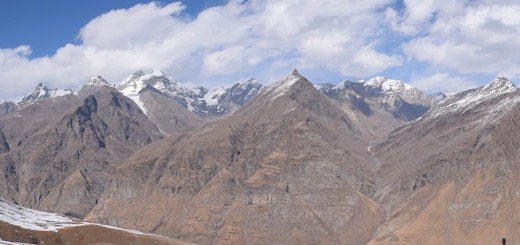



Thank you, this was pretty helpful 🙂
it’s a great study of yours on the causes of polluton in river ganga
I have recently visited Banaras and found that Ganges is clean and efforts to keep it clean are showing results. Pilgrims are unaware of their little ritual leaves behind a massive amount of waste when multiplied by the millions that visit makes it a very large pile to handle, this everyone should follow a rule of not disposing a single petal instead pick a small amount of trash out of the Ganges and disposing it off properly. This worshipful deed will definitely show immense changes in the years to come.